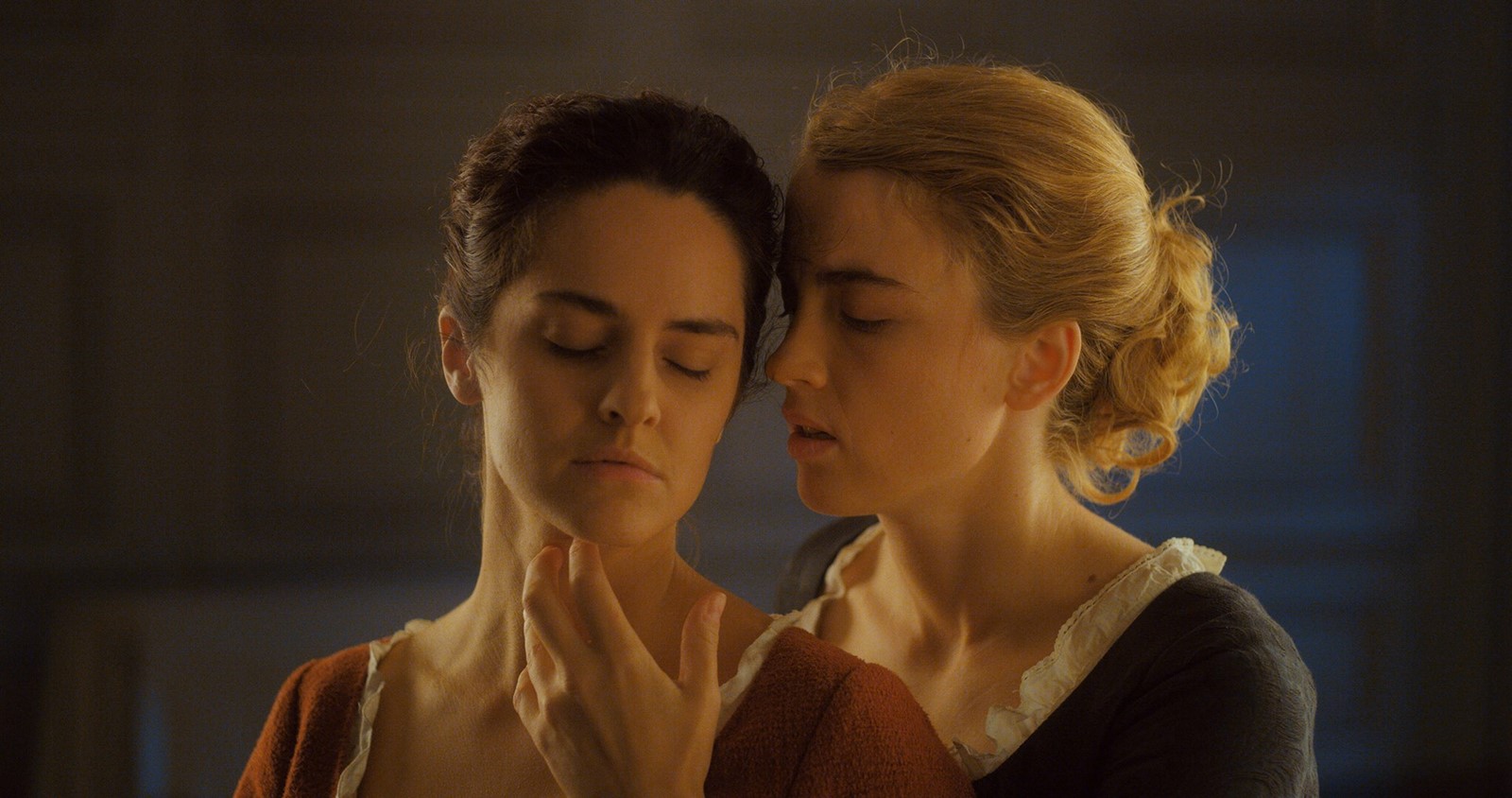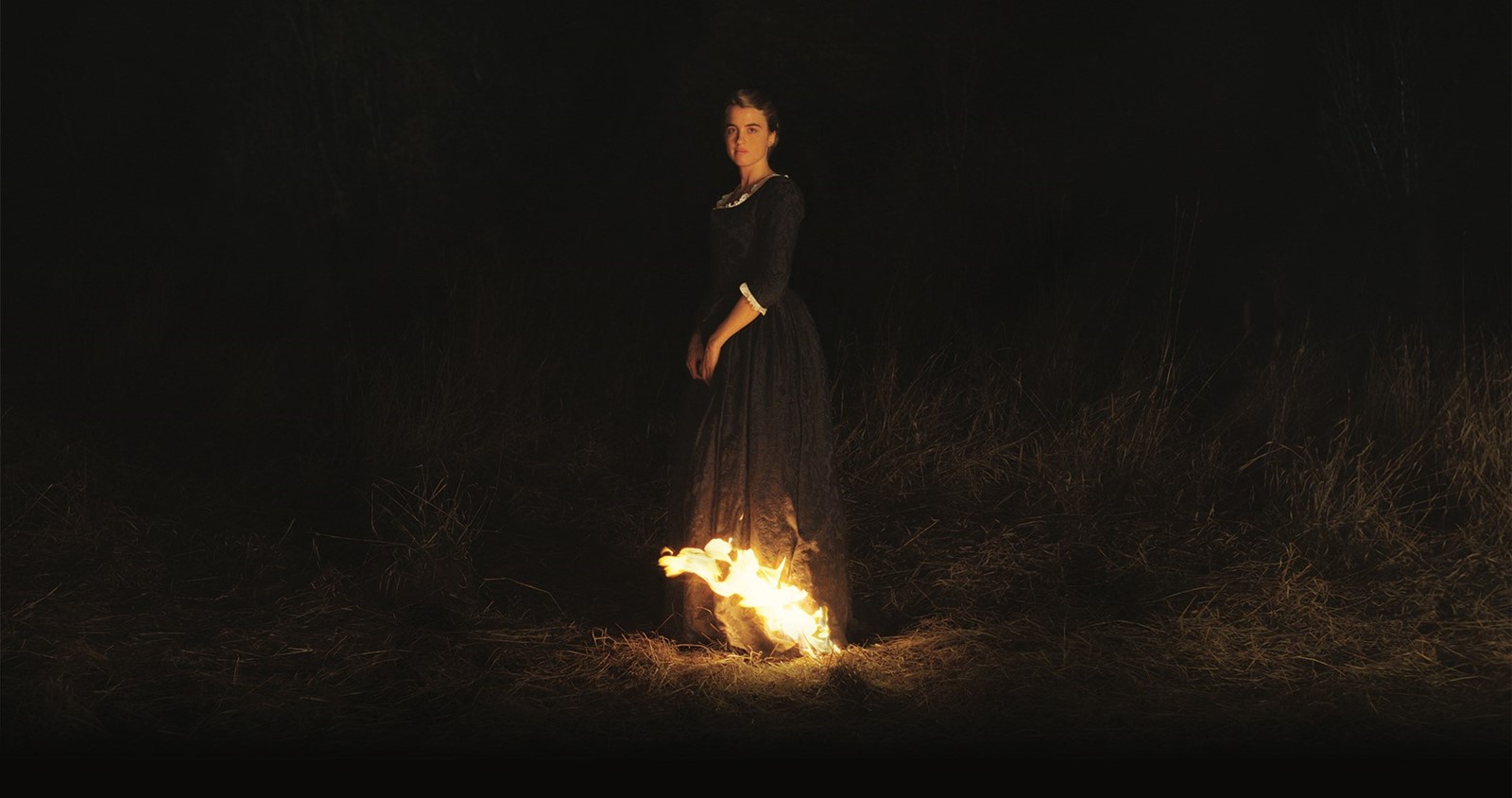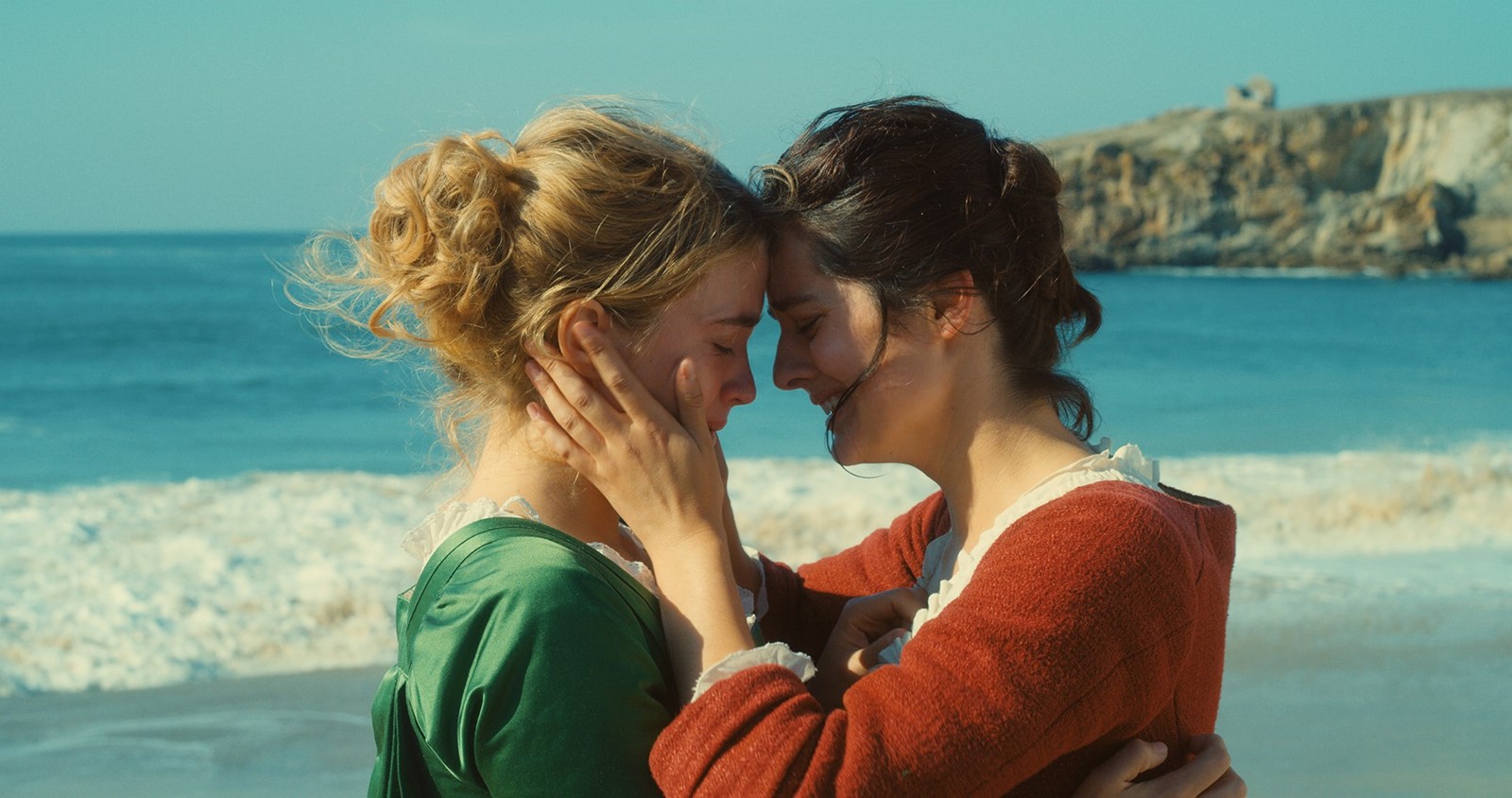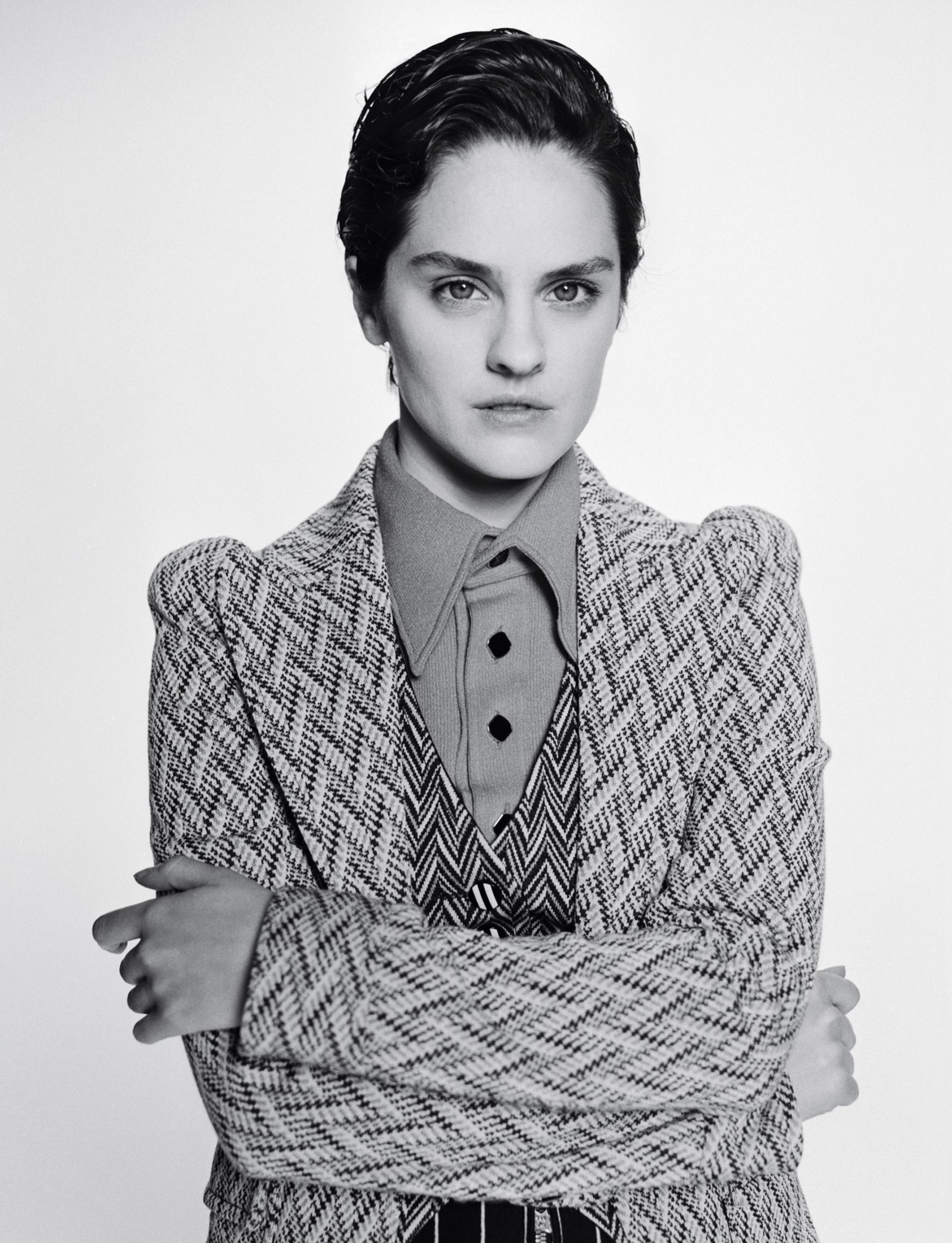“Do all lovers feel like they’re inventing something?” whispers Héloïse (Adèle Haenel) to the woman commissioned to paint her, Marianne (Noémie Merlant), in Céline Sciamma’s queer romance Portrait of a Lady on Fire. The setting is 18th-century France, and the moment is the culmination of a deeply felt mutual attraction between the two women: but the question could equally apply to Sciamma, whose work has always felt like it reaches for a whole new way of telling stories. As she has said herself, “It’s not like you have to scratch your head for hours thinking, ‘How am I not going to objectify this woman?’ It’s not that hard.” And yet, the levels at which her female gaze operates, and invites you in, do feel invented.
While now-romantic partners Haenel and Sciamma have worked together for years – their actor-director relationship began with the poolside coming-of-age tale Water Lilies – the film’s breakout star is Merlant, who plays the painter challenged to paint Héloïse’s wedding portrait for her husband-to-be. This is despite the fact Héloïse refuses to sit for it, as she doesn’t want to get married at all – beginning the process of secret observation and looking, on Marianne’s part, which develops into a charged romance. As Merlant, who has also recently turned her hand to directing, reveals, the remarkable feeling of intimacy with the character – of feeling like we are looking through her eyes, as well as our own – had everything to do with Sciamma’s exacting, precise technique. (And, of course, having less men on the set may have helped.)
Claire Marie Healy: I saw Céline speak at the BFI last year, and she was saying how on set she was very particular about everything that you and Adèle had to do – how it was quite technical.
Noémie Merlant: Yes, everything was on the script. Each look on the screen. But when you have a lot of things that you have to do, that are written, it actually [gives] you a frame and then in this frame you can find your freedom. I know that I have to do a breath, but I have one thousand ways to do a breath, or one thousand ways to look at Adèle. Even the text – we couldn’t change even one word – but when you really know your text well and you don’t think about it anymore, then you’re free again to break it. You forget it. I think it’s like with music, I would say a violinist has to really know the music, and hears it more than one thousand times – at which point when he really knows it, and know all the things that he has to do, and all the technical [elements]... then he just puts life in it and forgets everything! It’s the same.

CMH: It’s the nature of performance really. And I think that there is something in that – perhaps why there’s such amazing performances in this film from you and Adèle, in that you’re depicting a time where there are a lot of restrictions to living for women. It’s interesting that the storyline is women pushing against that and then equally you as actors are pushing against restrictions or breaking through them. I imagine there was a productive tension to that?
NM: It’s a symbol of that period and what we put on women. What they put on a woman. In this movie it was all about our desires in this kind of culture which was really heavy. We become more and more comfortable with our bodies throughout the movie. The dresses (become) less tight, I start to put my hands in my pockets. We were trying to build this relationship, with Adèle, between Marianne and Héloïse – and we didn’t know each other. We didn’t rehearse together [before], so really we were creating the moment. That was a way to show something magical, something [that had] sincerity – because we were creating a collaboration at the same time [that] we were creating the collaboration of Marianne and Héloïse. When you were talking about details – in this movie [Céline] holds back even the music, there is complete silence and then there is this boom of music. So when there is music people really feel it. I think it is the same with the decor.
CMH: The set design in the house is remarkably plain for a ‘costume drama’, or what we might expect of them.
NM: Exactly, the set – in the same way that the way to act is all about holding back. How we don’t smile at the beginning of the movie – because we don’t want to smile – and [then] when we smile in the movie it’s because it’s a real smile, and it’s really sincere. It’s little details: like the smiles become larger, the eyes become more and more open, you feel more and more of the desires and even the way we touch things or (each other), it’s also with more intensity. Working with Céline was really elegant, in every element. I really liked that.
CMH: It definitely builds in that way. To smile is to really open yourself up to someone – it’s vulnerable isn’t it? And it builds to this cathartic moment, when they reveal their attraction – and it’s so modern, suddenly, and you’re so easy with each other.
NM: It was also mainly women on set. There were men on the crew, of course, [but] compared to other sets it was more women than usual.

CMH: How does that compare to other experiences of yours?
NM: Of course it’s different, because we are different when we are with the same sex. There is kind of a natural equality, intimacy, because we of course understand things more quickly but we have the same kind of problems. It was a really intimate movie in and of itself – about women and their intimacy – so it was easier to only be with other women most of the time, because we were talking about that. There’s always this gaze that you feel in the movie, that we create... this sorority. The vision Céline was really creating [was] this environment of kindness and collaboration – it’s really important for her to create this original gaze.
CMH: What work did you do in terms of entering into that historical period? Did you do any research into the female painters that existed in this time?
NM: We talked a lot about this moment in time, where there were about a hundred female painters that were then erased from history. But what was really important for Céline, and then for us, was really to be focused on doing something really modern, actual and sincere. So, it was more the costumes, the text and then the set were what felt like I was putting on the past. But for everything else in terms of preparing for my role, and Adèle for her role also was really more technical. So I did some preparation with Hélène Delmaire, the painter of all the paintings that you see in the movie.
CMH: Ah yes! She seems amazing. I was reading that she wanted to paint for Studio Ghibli as a teenager.
NM: The work with her was interesting! I was observing her a lot before this – it was like dancing. I found that the painter has their own dance in a way: the aim of the painter is that particular look where you concentrate. It’s really profound and deep, and distant at the same time, and so I was trying to catch this gaze. And all the time it’s between the look at the model and the look at the canvas and the gesture, and then three steps back to look at the painting, and repeat. With a painter it’s this kind of twisting back and twisting forward. I was really observing Adèle and she was really observing me.

CMH: There’s a power dynamic, there, and it shifts in very subtle ways.
NM: Yes, and at the beginning of the movie everything is very closed, our smile, our faces, it’s really not alive – but we feel that there is something that is desired somewhere. Even Marianne as a painter, she feels so lucky to be a painter, like she doesn’t have to marry, but she’s still stuck in the rules of this period.
CMH: I guess that’s kind of the gift that Héloïse gives to Marianne – opening her up in that way so she can be vulnerable enough to feel these things, and that gives her this creativity, beyond just talent. It’s wonderfully done. In some ways it’s quite obvious, but why do you think audiences have responded so strongly and fiercely to this film?
NM: I think it’s because firstly it’s a strong love story, built with real sincerity and imagination. Céline is someone who is always trying to find a new way to express things. She thought of something new – and it’s something that we miss, to have this energy to tell a story with only women talking about love. That to me is this original gaze: the respect, with no violence, just [a] really respectful gaze. It’s kind of an invitation, this movie, an invitation to a vision of women as they really are. To me, when I first read it I felt that this movie had something really true – because it just takes the time to be with women, how we are when there are no men, how we talk together. We don’t talk about men all the time.
CMH: Did you have an early memory of film that hit you in a similar way, perhaps a film that really drew you to acting?
NM: The first movie that I saw in the cinema and [had an emotional reaction to] was actually Titanic! When I was nine years old, I was living in a small town and it was hard to see it because the cinema was full every day. After [several] weeks, I found a place to see this movie. I wanted to fall in love.
CMH: I love that.
NM: Céline loves this movie too, so we were talking a lot about it on set. And the scene where we are on the stairs – we were saying, this is our Titanic scene!
Portrait of a Lady on Fire is in UK cinemas from February 28, 2020.
Hair: Sébastien Richard at the Wall Group. Make-Up: Carole Colombani at the Wall Group Using Kosas. Photographic Assistants: Stan Rey-Grange and Christian Bragg. Production: Rose Paris.
